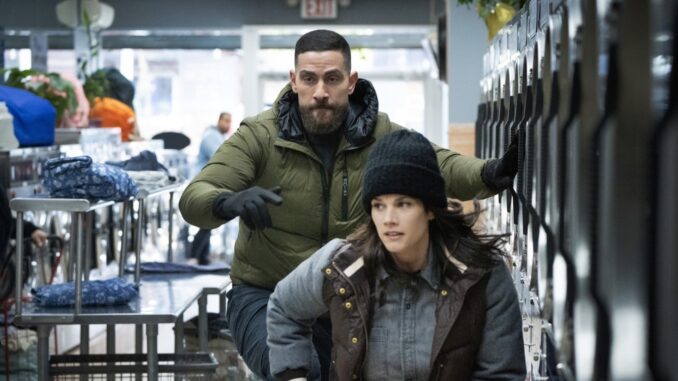
In the ever-evolving landscape of television crime dramas, CBS’s FBI consistently delivers narratives that are both compelling and reflective of real-world issues. Season 7, Episode 11, titled “Shelter,” is no exception. This episode masterfully intertwines themes of violence, vulnerability, and the relentless pursuit of justice, offering viewers a poignant look into the complexities faced by law enforcement and the communities they serve.
H1: A Shocking Opening: The Shelter Shooting
The episode begins with a harrowing scene: a gunman opens fire at a homeless shelter in Astoria, resulting in multiple casualties. This tragic event sets the stage for an intense investigation, as the FBI team races against time to uncover the perpetrator’s identity and motives.
H2: Initial Suspicions: A Hate Crime?
Given the shelter’s role in housing undocumented immigrants, the team initially suspects the shooting to be a hate crime. This theory gains traction when surveillance footage identifies the shooter as Vernon Walsh, a former biker gang member with a history of violence.
H3: The 3D-Printed Weapon
Adding a layer of complexity to the case, it’s revealed that Walsh used a 3D-printed gun in the attack. This discovery not only showcases the evolving nature of criminal tactics but also highlights the challenges law enforcement faces in tracking untraceable weapons.
H4: Unraveling the Cartel Connection
As the investigation deepens, the team uncovers ties between Walsh and a Mexican cartel. This revelation shifts the narrative from a potential hate crime to a more intricate web of organized crime, suggesting that the shelter shooting was part of a larger, more sinister agenda.

H2: Personal Stakes: OA’s Connection
Special Agent Omar Adom “OA” Zidan’s personal connection to the shelter adds an emotional depth to the episode. His past involvement with the shelter fuels his determination, blurring the lines between professional duty and personal commitment.
H3: The Emotional Toll on Agents
The episode delves into the psychological impact such cases have on FBI agents, particularly when personal connections are involved. OA’s struggle to maintain objectivity while confronting his own emotions offers viewers a raw and authentic portrayal of the human side of law enforcement.
H2: Ines Madera: A Mother’s Desperation
Central to the narrative is Ines Madera, a woman entangled with the cartel and determined to protect her son, Miguel, from a life of crime. Her story underscores the episode’s exploration of maternal instincts and the lengths a mother will go to safeguard her child.
H3: The Dilemma of Informants
Ines’s predicament highlights the precarious position of informants within criminal organizations. Her cooperation with the FBI comes at a high personal cost, shedding light on the moral ambiguities and dangers faced by those who choose to aid law enforcement.
H2: The Role of the DEA
The Drug Enforcement Administration’s involvement introduces another layer to the investigation. Their collaboration with the FBI emphasizes the necessity of inter-agency cooperation in tackling complex cases that span multiple jurisdictions and criminal networks.
H3: Jurisdictional Challenges
The episode portrays the challenges that arise when multiple agencies with differing protocols and priorities converge on a single case, highlighting the intricacies of bureaucratic navigation in high-stakes investigations.
H2: Nestor Cruz: The Vengeful Ex-Cop
Nestor Cruz, a former police officer seeking vengeance against the cartel, emerges as a pivotal character. His personal vendetta adds tension and unpredictability to the storyline, illustrating how past traumas can drive individuals to extreme actions.
H3: Vigilantism vs. Justice
Cruz’s actions raise ethical questions about vigilantism and the thin line between seeking justice and exacting personal revenge, prompting viewers to reflect on the moral complexities inherent in the pursuit of retribution.
H2: The Climactic Standoff
The episode builds to a tense standoff, where the FBI team confronts Cruz in a bid to prevent further bloodshed. This climax not only serves as an action-packed sequence but also as a moment of character development, revealing the agents’ commitment to preserving life, even when faced with morally ambiguous adversaries.
H3: Negotiation Tactics
The standoff showcases the FBI’s negotiation strategies, emphasizing the importance of communication, empathy, and psychological insight in de-escalating potentially deadly situations.
H2: The Aftermath: A Hollow Victory
Despite the team’s efforts, the resolution leaves a sense of unease. The DEA’s decision to return Miguel to his cartel-affiliated father in exchange for information underscores the often harsh realities of law enforcement compromises, leaving viewers to ponder the true cost of such decisions.
